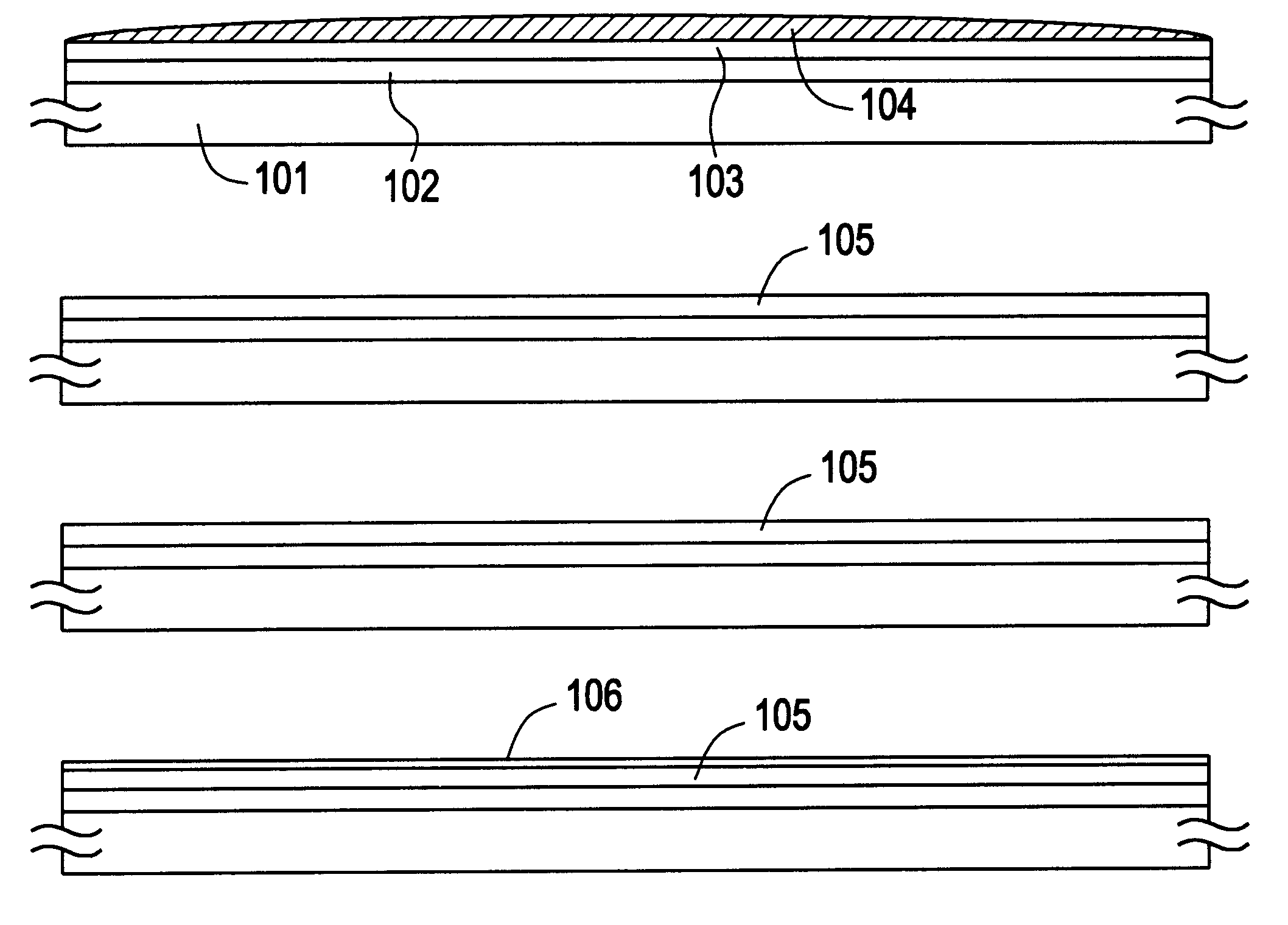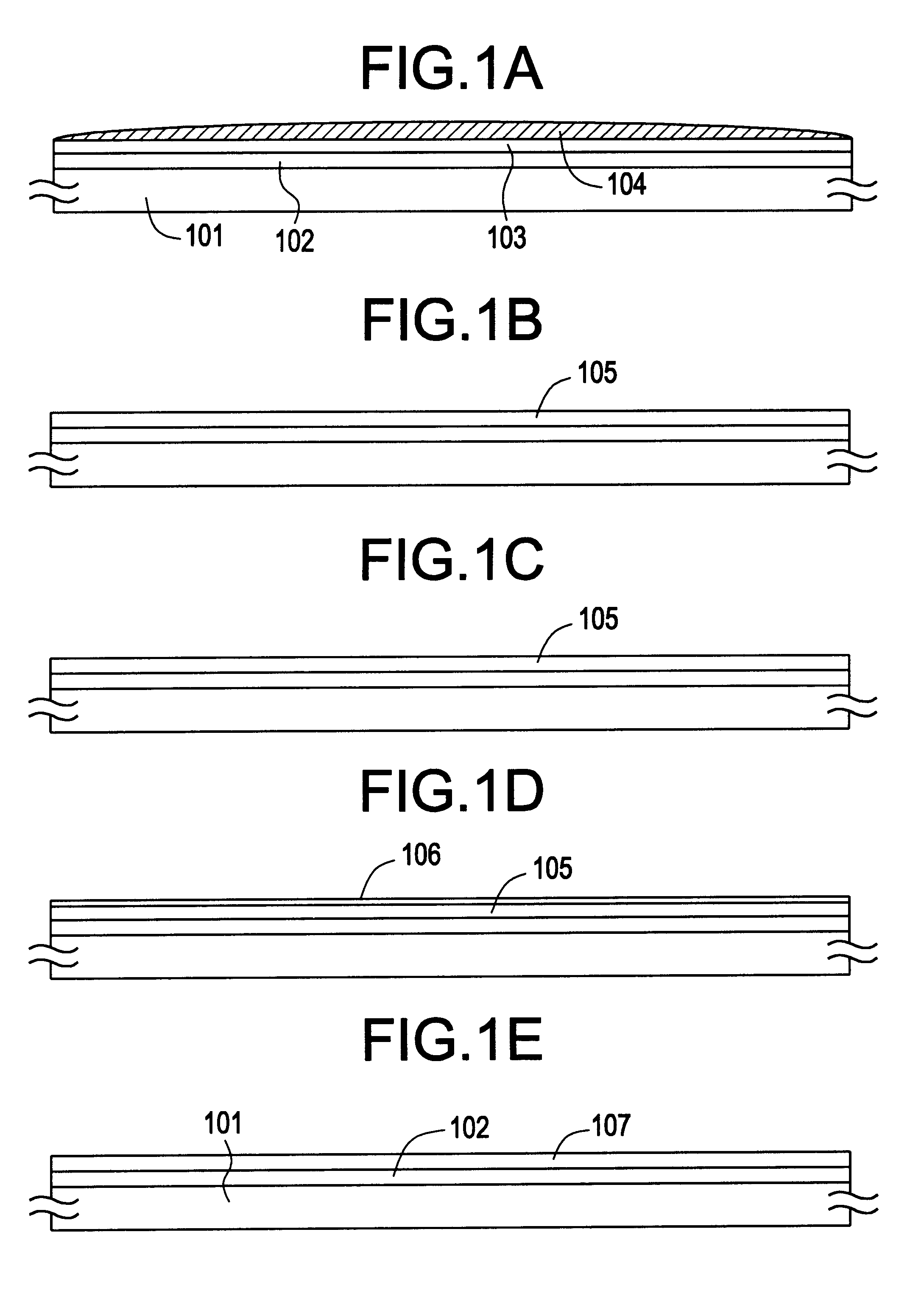Method for fabricating a semiconductor device
a semiconductor and device technology, applied in the direction of semiconductor devices, electrical appliances, transistors, etc., can solve the problems of difficult to obtain the required crystallinity, difficult to obtain a good annealing effect across the wide area, and the irradiation of laser light is apt to become unstabl
- Summary
- Abstract
- Description
- Claims
- Application Information
AI Technical Summary
Benefits of technology
Problems solved by technology
Method used
Image
Examples
second embodiment
The present embodiment relates to a case when Cu is used as the metal element which promotes the crystallization of silicon in the arrangement shown in the first embodiment. In this case, cupric acetate [Cu(CH.sub.3 COO).sub.2 ] or cupricchloride (CuCl.sub.2 2H.sub.2 O) may be used as the solution for introducing Cu.
third embodiment
The present embodiment relates to a case of growing crystal in the form different from that in the first embodiment. That is, the present embodiment relates to a method of growing the crystal in a direction parallel to the substrate, i.e. a method called lateral growth, by utilizing the metal element which promotes crystallization of silicon.
FIG. 2 shows the fabrication process according to the present embodiment. At first, a silicon oxide nitride film is formed as an underlying film 202 in a thickness of 3000 angstrom on the Corning 1737 glass substrate (or a quartz substrate) 201.
Next, an amorphous silicon film 203 which is the starting film for a crystalline silicon film is formed in a thickness of 600 angstrom by low pressure thermal CVD. The thickness of the amorphous silicon film is preferable to be less than 2000 angstrom as described before.
It is noted that plasma CVD may be used instead of the low pressure thermal CVD.
Next, a silicon oxide film not shown is formed in a thic...
fourth embodiment
The present embodiment relates to a case of fabricating a thin film transistor disposed in a pixel region of an active matrix type liquid crystal display or an active matrix type EL display by utilizing the invention disclosed in the present specification.
FIG. 3 shows the fabrication process according to the present embodiment. At first, the crystalline silicon film is formed on the glass substrate through the process shown in the first or the third embodiment. When the crystalline silicon film is obtained by the arrangement shown in the first embodiment, it is patterned to obtain the state shown in FIG. 3A.
In the state shown in FIG. 3A, the reference numeral 301 denotes a glass substrate, 302 an underlying film, and 303 an active layer formed of the crystalline silicon film. After obtaining the state shown in FIG. 3A, a plasma treatment is performed within a reduced pressure atmosphere in which oxygen and hydrogen are mixed. The plasma is generated by high-frequency discharge.
Organ...
PUM
 Login to View More
Login to View More Abstract
Description
Claims
Application Information
 Login to View More
Login to View More - R&D
- Intellectual Property
- Life Sciences
- Materials
- Tech Scout
- Unparalleled Data Quality
- Higher Quality Content
- 60% Fewer Hallucinations
Browse by: Latest US Patents, China's latest patents, Technical Efficacy Thesaurus, Application Domain, Technology Topic, Popular Technical Reports.
© 2025 PatSnap. All rights reserved.Legal|Privacy policy|Modern Slavery Act Transparency Statement|Sitemap|About US| Contact US: help@patsnap.com



